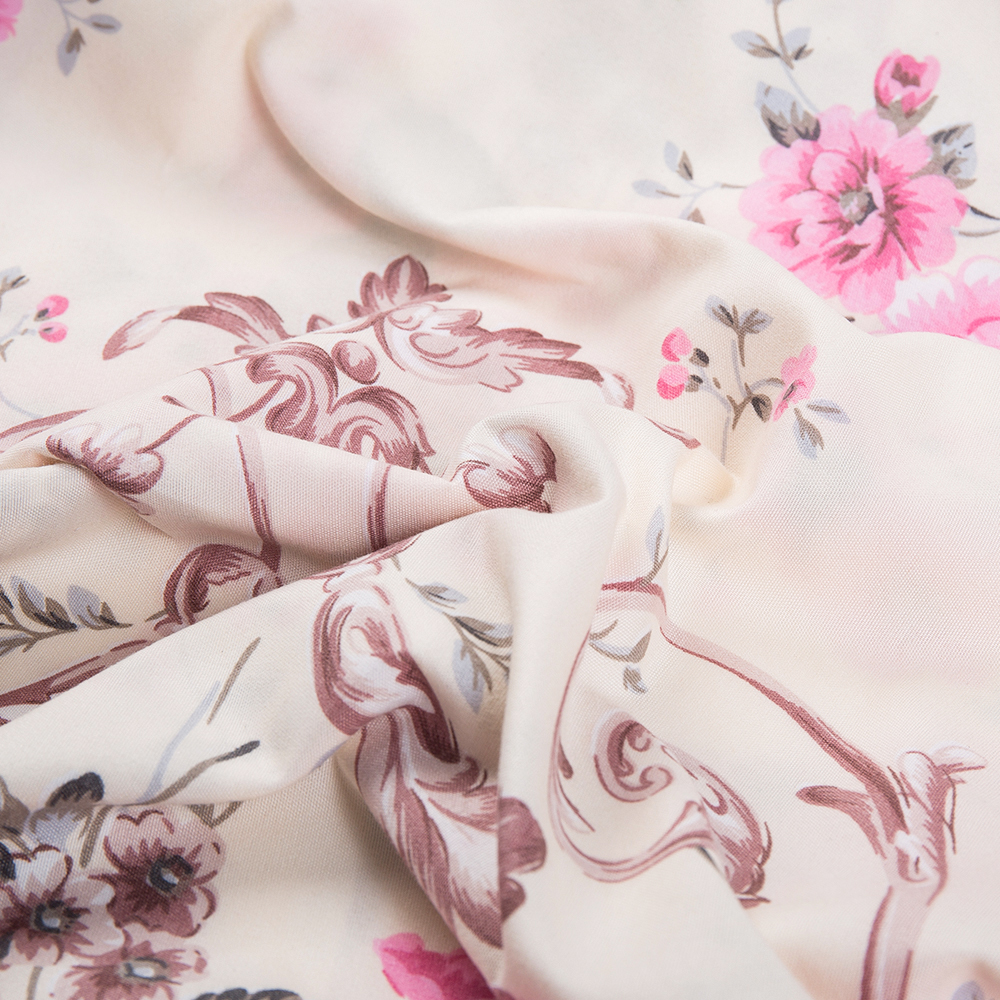
With the continuous advancement of technology and the increasing demand of consumers for high-performance fabrics, microfiber fabric has become one of the important innovations in the textile industry. As the leader among them, PR (Polyester and Rayon) microfiber fabric has won the favor of consumers around the world with its excellent moisture absorption, comfort and durability. This fabric not only meets the high requirements of modern people for the quality of life, but also brings new opportunities for environmental protection and sustainable development to the textile industry.
PR microfiber fabric is made of polyester (Polyester) and rayon (Rayon) fibers blended by a special process. The diameter of the fiber is very fine, much finer than ordinary textile fibers. Due to the fineness of the fiber, the surface of this fabric can form an extremely fine textile structure, making it very soft and smooth to the touch. The characteristics of PR microfiber fabric are that it has extremely high moisture absorption and breathability, can quickly absorb and discharge sweat from the body surface, and keep the skin dry and comfortable.
PR microfiber fabric also has strong durability. Compared with traditional fiber materials, PR fabrics are more tear-resistant, wear-resistant and have a longer service life. Whether used in clothing, home textiles, or sports and outdoor equipment, PR microfiber fabrics can provide a comfortable experience while maintaining high durability.
With the increase in environmental awareness, more and more consumers are beginning to choose environmentally friendly and sustainable products. PR microfiber fabrics not only meet this demand, but also promote the green development of the textile industry. First of all, the production process of PR fabrics uses advanced environmental protection technology to reduce wastewater and waste gas emissions during the production process. Its raw materials, polyester fiber and rayon fiber, are usually derived from recycled plastic bottles and natural wood pulp, which greatly reduces resource waste.

The durability of PR microfiber fabrics also gives it a long service life, reducing the need for frequent replacement of clothing and home textiles, and indirectly reducing the burden of textiles on the environment. Against the background of increasingly tight global resources, the environmental attributes of PR fabrics have made it an important force in promoting the sustainable development of the textile industry.
PR microfiber fabrics are widely used in various fields due to their unique performance and superior comfort. First of all, in the field of clothing, PR fabrics are widely used in the production of sportswear, underwear, pajamas and other clothing with high comfort requirements. Its good air permeability and moisture absorption can ensure that the wearer stays dry during exercise or daily activities, and avoids discomfort to the skin caused by sweat.
In the field of home textiles, PR microfiber fabrics have also been widely used. Whether it is bedding such as sheets and quilt covers, or soft furnishings such as sofa covers and curtains, PR fabrics can provide consumers with a soft and comfortable use experience. At the same time, its durability and easy cleaning make these home textile products more convenient and durable in actual use.
PR microfiber fabrics are also used in high-end customization fields, such as high-end car seats, luxury hotel bedding, etc. It not only provides unparalleled comfort, but also has a place in the high-end market due to its elegant appearance and excellent functionality.
With the continuous innovation of textile technology, the performance of PR microfiber fabrics is also continuously improving. In the future, PR fabrics are expected to expand more in functionality. For example, with the development of smart textile technology, PR microfiber fabrics may integrate more intelligent functions, such as temperature control, antibacterial, anti-ultraviolet and other functions, providing consumers with more diverse choices.
With the optimization of manufacturing processes, the cost of PR microfiber fabrics is expected to gradually decrease, allowing them to be widely used in a wider range of markets. In addition, with the popularization of green environmental protection concepts, the production process of PR fabrics will pay more attention to environmental protection and resource conservation, and promote the sustainable development of the textile industry.
PR microfiber fabrics are becoming a bright new star in the textile industry with their excellent comfort, durability and environmental protection. Whether in clothing, home textiles, or high-end customization, PR microfiber fabrics have shown huge market potential. With the advancement of technology and the continuous changes in consumer demand, PR microfiber fabrics will continue to move forward in innovation and become a future trend that cannot be ignored in the textile industry.